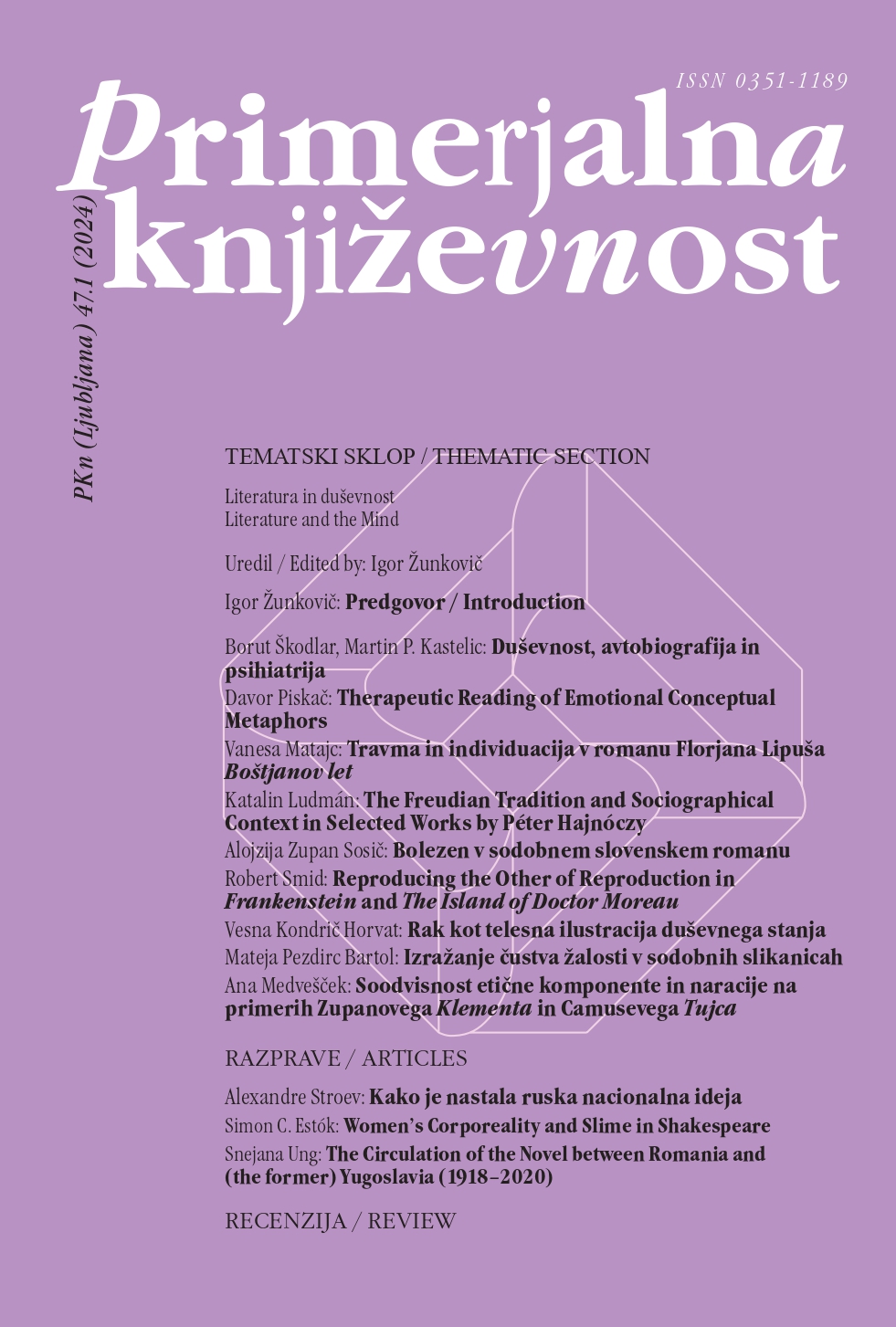The Expression of Sadness in Modern Picture Books
DOI:
https://doi.org/10.3986/pkn.v47.i1.08Keywords:
children’s literature, picture books, illustrations, emotions, sadness, emotional literacy, cognitive literary studiesAbstract
The picture book is the first medium with which children come into contact and therefore has a complex influence on their aesthetic experience as well as on their linguistic, cognitive, motor and emotional development. Picture books offer powerful tools to understand one’s own and others’ feelings and are therefore an important factor in the acquisition of emotional literacy. This article focuses on the primary and universal emotion of sadness and examines its expression through the interplay of verbal and visual communication. An analysis of selected picture books on the theme of sadness shows that they can be divided into three groups. The first is aimed at children and parents confronted with the loss of a close relative, the second is aimed at children in the pre-reading and early reading stages and deals with the recognition and expression of feelings, and the third presents different nuances of emotional states through wide-open visual readings that allow for numerous interpretations, thus targeting readers of all ages beyond the classic children’s literature readership.
References
Bednjički Rošer, Barbara. »Z vzgojiteljevo metodično kompetentnostjo do čustvene in bralne pismenosti«. Jezik in slovstvo, let. 68, št. 3, 2023, str. 149–164.
Blažić, Milena Mileva. »Nagrada izvirna slovenska slikanica – priložnost za redefinicijo?« Sodobnost, let. 79, št. 11, 2015, str. 1508–1512.
Dunne, Andrew. »Nenehen pritisk popolnosti, ki veje z družbenih omrežij«. Delo, 23. 6. 2023, str. 19.
Haramija, Dragica, in Janja Batič. Poetika slikanice. Podjetje za promocijo kulture Franc-Franc, 2013.
Igerabide, Juan Kruz. Jona je žalosten. Prev. Barbara Pregelj, Založba Malinc, 2013.
Kavčič, Tina, in Urška Fekonja. »Čustveni razvoj v zgodnjem otroštvu«. Razvojna psihologija, 2. zv., ur. Ljubica Marjanovič Umek in Maja Zupančič, Znanstvena založba Filozofske fakultete UL, 2020, str. 393–412.
Kobal Grum, Darja. Vem, hočem, čutim: kognitivno-motivacijski vidiki čustev. Znanstvena založba Filozofske fakultete UL, 2023.
Kobe, Marjana. Pogledi na mladinsko književnost. Mladinska knjiga,1987.
Maclear, Kyo. Virginija Volk. Prev. Tina Mahkota, Založba Zala, 2016.
Mazi, Darka. Luka izgubi očka. Morfemplus, 2021.
Menéndez Ponte, María. Pisani svet čustev. Rokus Klett, 2022.
Mlakar, Ida. Kako sta Bibi in Gusti preganjala žalost. Didakta, 2004.
Montecchi, Fabrizio. Gledališki list. Lutkovno gledališče Ljubljana, 2017.
Nikolajeva, Maria. »Verbalno in vizualno. Slikanica kot medij«. Otrok in knjiga, let. 30, št. 58, 2003, str. 5–25.
Nikolajeva, Maria. »Picturebooks and Emotional Literacy«. The Reading Teacher, let. 67, št. 4, 2013/2014, str. 249–254.
Nikolajeva, Maria. »Emotions in Picturebooks«. The Routledge Companion to Picturebooks, ur. Bettina Kümmerling-Meibauer, Routledge, 2018, str. 110–118.
Tan, Shaun. Rdeče drevo. Prev. Vesna Česen, eBesede, 2012.
Velthuijs, Max. Žabec je žalosten. Prev. Tatjana Žener, Mladinska knjiga, 2003.
Zorman, Barbara. »Čustvena nalezljivost. Analiza na primerih izbranih slovenskih slikanic«. Sodobnost, let. 81, št. 11, 2017, str. 1621–1632.
Zupan Sosič, Alojzija. Teorija pripovedi. Litera, 2017.
Žunkovič, Igor. Zgodbe, ki nas pišejo: izmišljene zgodbe, kako jih beremo in kako nas spreminjajo. Znanstvena založba Filozofske fakultete UL, 2022.


